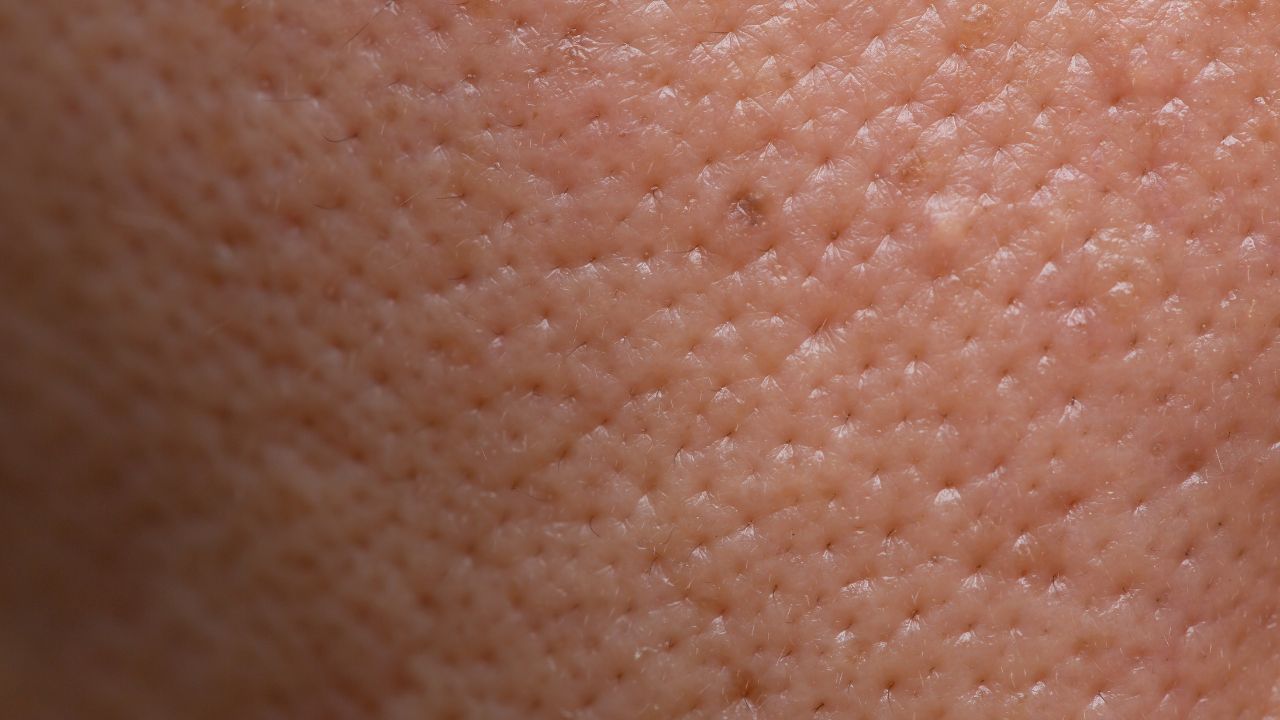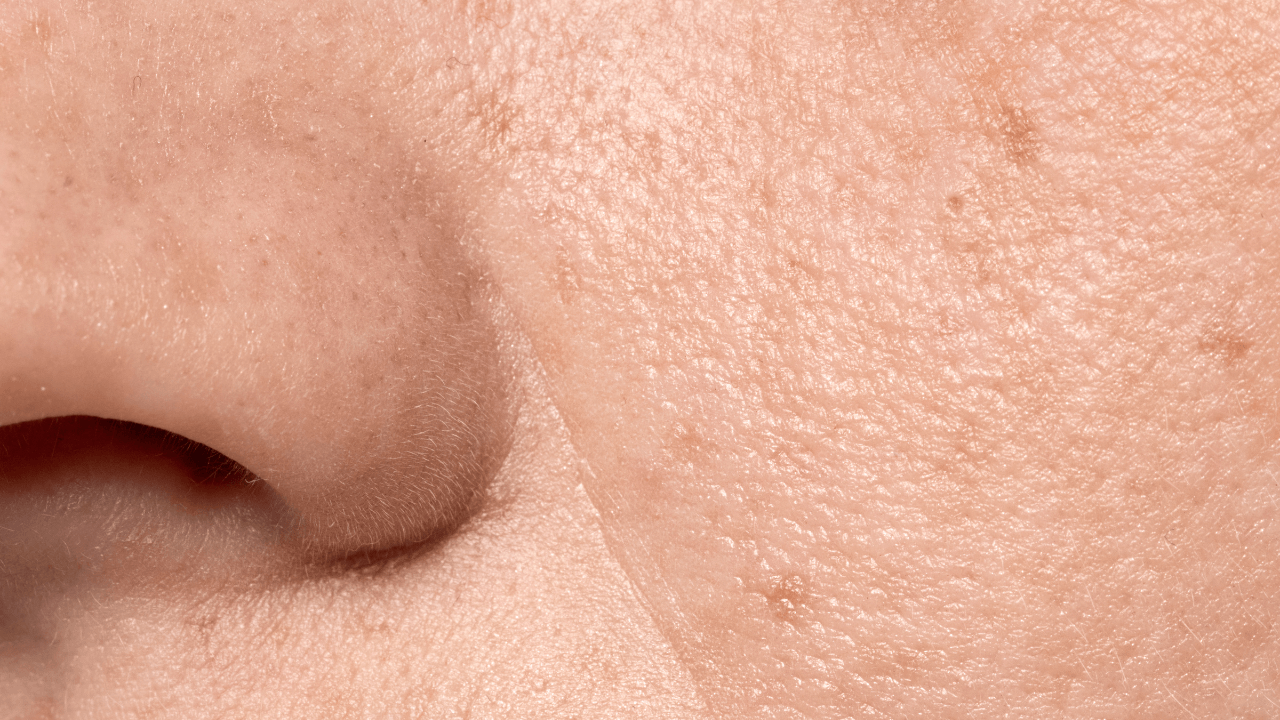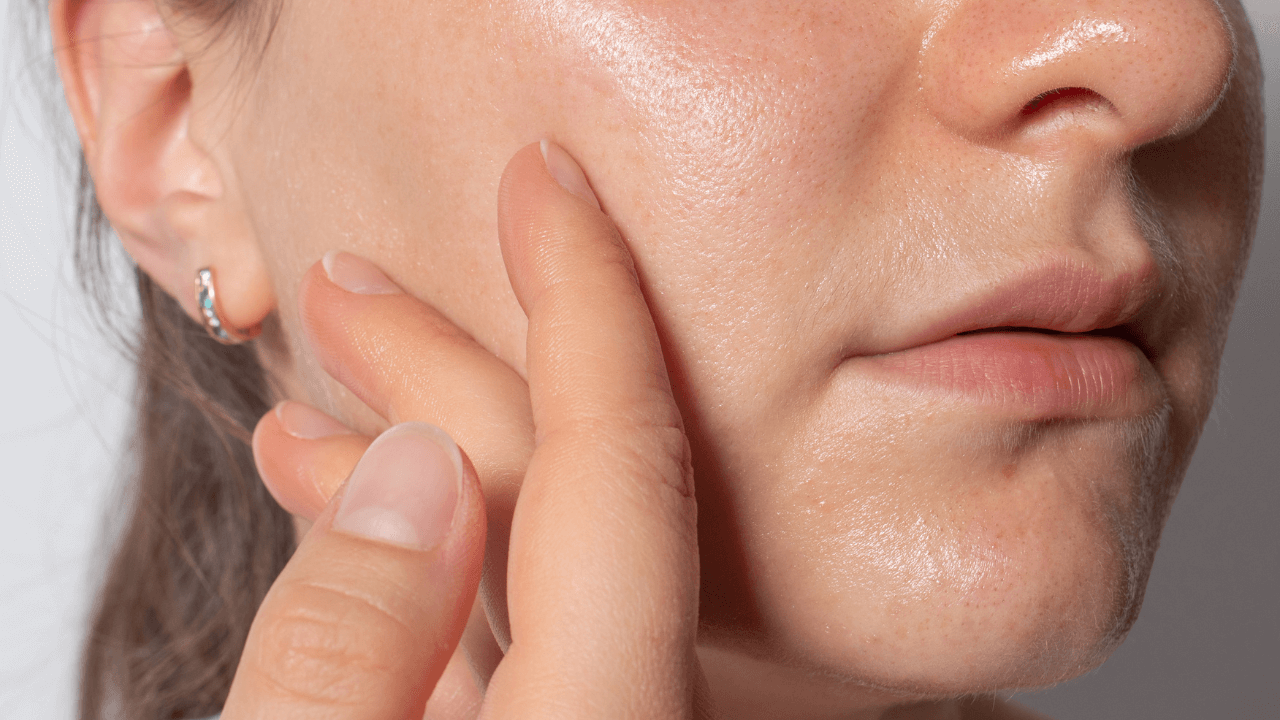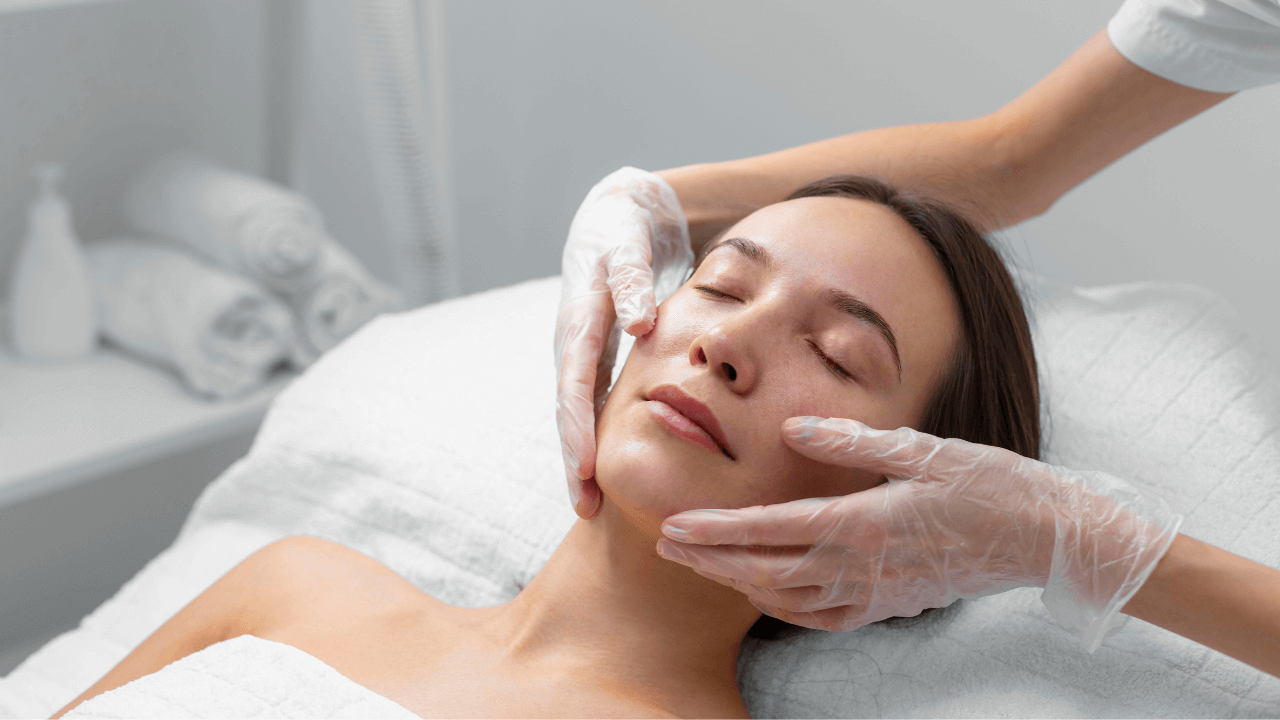Enlarged pores are one of the most common skincare concerns, affecting people of all ages and skin types. These visible openings in the skin can make your complexion appear uneven, textured, and older than it is. While pores are a natural and necessary part of healthy skin function, understanding why they become enlarged and how to minimize their appearance effectively can help you achieve the smooth, refined complexion you desire.
What Are Enlarged Pores?
Enlarged pores are hair follicle openings that appear larger than usual, creating visible holes or indentations in the skin's surface. Every person has pores—they're essential for skin health as they allow oil (sebum) and sweat to reach the skin's surface. However, when pores become dilated beyond their normal size, they become a cosmetic concern that can significantly impact skin appearance and texture.
Understanding Normal vs. Enlarged Pores
Regular pores are barely visible to the naked eye and serve their function without creating textural irregularities. Enlarged pores are visible, often appearing as small holes or depressions in the skin that can collect makeup, dirt, and oil, making them even more noticeable.
Pore Size Facts
-
Average pore diameter: 0.02-0.05mm for regular pores
-
Enlarged pore threshold: Pores larger than 0.05mm are typically considered enlarged
-
Pore count: Humans have approximately 20,000 pores on their face alone
-
Distribution: Pores are most significant and most numerous in the T-zone (forehead, nose, chin)
Types of Enlarged Pores
Oil-Related Enlarged Pores
Sebaceous Pores: Connected to oil glands, these are the most common type of enlarged pores. They typically appear on the T-zone and are influenced by the level of oil production.
Characteristics:
-
Round or oval shape
-
Often filled with oil or blackheads
-
More prominent in oily skin types
-
Worsen with hormonal changes
Age-Related Enlarged Pores
Structural Pores: Result from loss of skin elasticity and collagen breakdown around the pore opening, causing them to appear larger.
Characteristics:
-
Teardrop or elongated shape
-
More common after age 30
-
Often accompanied by fine lines
-
Primarily due to sun damage and natural aging
Acne-Related Enlarged Pores
Post-Inflammatory Pores: Enlarged openings that remain after acne lesions heal, often due to damage to the pore structure.
Characteristics:
-
Irregular shape
-
May have scarring around the opening
-
Can be deep and prominent
-
Often accompanied by other acne scarring
Root Causes of Enlarged Pores
Genetic Factors
Hereditary Influence: Pore size is primarily determined by genetics, with studies showing that 60-80% of pore characteristics are inherited.
Family History: If your parents have large pores, you're more likely to develop them as well.
Ethnic Variations: Some ethnic groups are genetically predisposed to larger pores, particularly those of African, Hispanic, and Mediterranean descent.
Hormonal Influences
Androgen Activity: Male hormones (androgens) stimulate oil production, which can cause pore openings to stretch over time.
Puberty: Hormonal surges during adolescence often lead to initial pore enlargement.
Menstrual Cycles: Monthly hormonal fluctuations can temporarily affect pore appearance.
Menopause: Declining estrogen levels can reduce skin elasticity, making pores appear larger.
Age and Sun Damage
Collagen Breakdown: UV radiation damages collagen and elastin fibers, which generally keep pores tight and small.
Elastin Loss: Decreased elasticity allows pore walls to stretch and remain dilated, resulting in a loss of elasticity.
Cumulative Damage: Years of sun exposure gradually worsen pore appearance.
Photoaging: Premature aging from UV exposure accelerates pore enlargement.
Oil Production and Skin Type
Sebum Overproduction: Excessive oil production can mechanically stretch pore openings.
Thick Sebum: Heavy, sticky oil is more likely to clog and dilate pores.
Oily Skin Types: Naturally produce more oil, leading to larger-appearing pores.
Hormonal Oil Surges: Stress, diet, and hormones can temporarily increase oil production.
Environmental and Lifestyle Factors
Pollution Exposure: Air pollution can clog pores and increase inflammation.
Smoking: Reduces collagen production and accelerates skin aging.
Poor Skincare Habits: Inadequate cleansing allows buildup that stretches pores.
Over-Cleansing: Excessive washing can stimulate the production of more oil.
The Science Behind Pore Function
Pore Anatomy
Hair Follicle Structure: Each pore contains a hair follicle surrounded by sebaceous glands.
Sebaceous Glands: Produce oil that travels up the follicle to the skin surface.
Muscle Attachment: Tiny muscles around pores can contract, temporarily making them appear smaller.
Normal Pore Function
Oil Transport: Pores deliver sebum to the skin surface for protection and hydration.
Temperature Regulation: Sweat glands located in particular pores help regulate body temperature.
Barrier Function: Healthy pores play a crucial role in maintaining the skin's protective barrier.
What Happens When Pores Enlarge
Structural Changes: Pore walls lose elasticity and can't contract back to their standard size.
Oil Accumulation: Enlarged pores trap more oil, debris, and dead skin cells.
Visibility Increase: Larger openings cast shadows, making them more noticeable.
Self-Perpetuating Cycle: Clogged, enlarged pores become even more stretched and visible.
Professional Assessment and Diagnosis
When to Consult a Professional
Consider seeing a dermatologist when:
-
Pores suddenly become more prominent
-
Traditional skincare isn't improving appearance
-
Pores are accompanied by persistent acne
-
You're considering professional treatments
-
Enlarged pores significantly impact self-confidence
Professional Evaluation Methods
Visual Assessment: Dermatologists evaluate pore size, distribution, and associated skin conditions.
Dermoscopy: A magnified examination reveals the detailed pore structure and contents.
Skin Analysis: Professional devices measure oil production, elasticity, and hydration levels to provide accurate results.
Photography: High-resolution images document the current condition and track the progress of treatment.
Evidence-Based Treatment Approaches
Topical Treatments for Pore Reduction
Retinoids: The Gold Standard
Prescription Options:
-
Tretinoin: Most effective for pore reduction and prevention
-
Adapalene: A Gentler option with anti-inflammatory benefits
-
Tazarotene: Strongest option for resistant cases
Over-the-Counter Alternatives:
-
Retinol: Converted to retinoic acid in skin
-
Retinyl Palmitate: The Gentlest option for sensitive skin
-
Retinaldehyde: More stable and less irritating than retinol
Benefits:
-
Increase the cell turnover rate
-
Prevent dead skin cell buildup
-
Stimulate collagen production
-
Improve skin texture and pore appearance
Chemical Exfoliants
Beta Hydroxy Acids (BHAs):
-
Salicylic Acid (0.5-2%): Oil-soluble, penetrates pores to clean from within
-
Benefits: Dissolves oil plugs, reduces inflammation, prevents blackheads
-
Best for: Oily skin, blackheads, and sebaceous pore types
Alpha Hydroxy Acids (AHAs):
-
Glycolic Acid (5-20%): Smallest molecule, deepest penetration
-
Lactic Acid (5-15%): Gentler with hydrating properties
-
Benefits: Surface exfoliation, collagen stimulation, improved skin texture
Polyhydroxy Acids (PHAs):
-
Gentler Alternative: Larger molecules, less irritating
-
Benefits: Exfoliation with hydration and antioxidant properties
-
Best for: Sensitive skin that can't tolerate AHAs or BHAs
Professional Pore Treatments
Chemical Peels
Light Peels:
-
Glycolic Acid Peels (20-30%): Improve surface texture and mild pore appearance
-
Salicylic Acid Peels (20-30%): Target oil-related pore issues
-
Frequency: Every 2-4 weeks for 3-6 sessions
Medium Peels:
-
TCA Peels (15-35%): Address deeper pore issues and aging-related enlargement
-
Combination Peels: Multiple acids for comprehensive treatment
-
Results: More dramatic improvement, but longer recovery
Laser and Light Treatments
Fractional Lasers:
-
CO2 Fractional: Most aggressive, significant pore reduction
-
Erbium Fractional: Gentler with less downtime
-
Mechanism: Create controlled injury to stimulate collagen remodeling
Non-Ablative Lasers:
-
IPL (Intense Pulsed Light): Improves overall skin texture
-
Nd: YAG Lasers: Target deeper skin layers without surface damage
-
Benefits: Collagen stimulation with minimal downtime
Radiofrequency Treatments:
-
Fractional RF: Combines microneedling with radiofrequency energy
-
Monopolar RF: Heats deeper skin layers to stimulate collagen
-
Benefits: Skin tightening and pore refinement
Microneedling and Related Procedures
Traditional Microneedling:
-
Mechanism: Creates micro-injuries to stimulate collagen production
-
Needle Depth: 0.5-2.5 mm, depending on skin concerns
-
Results: Gradual improvement over 3-6 months
Microneedling with PRP:
-
Platelet-Rich Plasma: Use the patient's growth factors
-
Enhanced Results: Faster healing and better outcomes
-
Downtime: 2-3 days of mild redness
Microneedling RF:
-
Combined Technology: Microneedling plus radiofrequency energy
-
Deeper Treatment: Targets multiple skin layers simultaneously
-
Results: Superior pore reduction compared to traditional microneedling
Injectable Treatments
Dermal Fillers for Pore Reduction
Hyaluronic Acid Fillers:
-
Mechanism: Plump skin around pores to reduce the appearance
-
Best for: Age-related pore enlargement
-
Duration: 6-12 months, depending on the product used
Collagen Stimulating Fillers:
-
Sculptra: Stimulates natural collagen production
-
Radiesse: Provides immediate volume plus collagen stimulation
-
Long-term Results: Gradual improvement over 6-24 months
Building an Effective Pore-Minimizing Routine
Daily Skincare for Pore Reduction
Morning Routine:
-
Gentle Cleanser: Remove overnight oil buildup without over-stripping
-
BHA Toner: Salicylic acid to keep pores clear (3- 4x per week)
-
Niacinamide Serum: Reduce oil production and pore appearance
-
Lightweight Moisturizer: Maintain hydration without clogging pores
-
Broad-Spectrum SPF 30+: Prevent further collagen damage
Evening Routine:
-
Oil Cleansing: Dissolve makeup and excess sebum
-
Water-Based Cleanser: Complete the double cleansing process
-
Retinoid Treatment: Apply 3- 4 times per week, building tolerance gradually
-
Hydrating Serum: Hyaluronic acid to maintain moisture balance
-
Night Moisturizer: Repair and restore skin barrier overnight
Weekly Intensive Treatments
Clay Masks (1- 2x per week):
-
Bentonite Clay: Draws out impurities and excess oil
-
Kaolin Clay: A Gentler option for sensitive skin
-
Charcoal Masks: Deep cleansing for very oily skin
Exfoliating Treatments:
-
AHA/BHA Masks: Higher concentration weekly treatments
-
Enzyme Peels: Gentle protein-dissolving exfoliation
-
Physical Exfoliation: Very gentle, only if needed
Professional Maintenance Schedule
Monthly Treatments:
-
Professional extractions
-
Light chemical peels
-
HydraFacial or similar treatments
Quarterly Treatments:
-
Medium-depth peels
-
Microneedling sessions
-
Comprehensive skin analysis
Annual Assessments:
-
Dermatologist evaluation
-
Treatment plan adjustments
-
Advanced procedure consideration
Key Ingredients for Pore Minimization
Pore-Clearing Ingredients
Salicylic Acid (0.5-2%):
-
Mechanism: Dissolves oil and debris inside pores
-
Benefits: Prevents blackheads, reduces pore appearance
-
Best for: Oily, acne-prone skin with sebaceous pores
Glycolic Acid (5-20%):
-
Mechanism: Exfoliates the surface and stimulates collagen
-
Benefits: Improves overall skin texture and pore appearance
-
Best for: Age-related pore enlargement and sun damage
Lactic Acid (5-15%):
-
Mechanism: Gentle exfoliation with hydrating properties
-
Benefits: Smoother skin texture, less irritation than glycolic
-
Best for: Sensitive skin or beginners to chemical exfoliation
Pore-Tightening Ingredients
Niacinamide (3-10%):
-
Mechanism: Regulates oil production and improves elasticity
-
Benefits: Reduces pore appearance, anti-inflammatory
-
Compatibility: Works well with most other ingredients
Zinc Oxide/Zinc PCA:
-
Mechanism: Oil control and anti-inflammatory effects
-
Benefits: Mattifying, reduces pore visibility
-
Best for: Oily skin types with enlarged pores
Peptides:
-
Mechanism: Stimulate collagen production around pores
-
Benefits: Long-term pore refinement, improved skin firmness
-
Types: Copper peptides, palmitoyl peptides, matrixyl
Oil-Control Ingredients
Witch Hazel:
-
Mechanism: Astringent properties temporarily tighten pores
-
Benefits: Immediate pore appearance reduction
-
Caution: Can be drying if overused
Green Tea Extract:
-
Mechanism: Antioxidant and anti-inflammatory properties
-
Benefits: Reduces oil production, soothes irritation
-
Gentle: Suitable for sensitive skin
Silica:
-
Mechanism: Absorbs excess oil and creates a matte finish
-
Benefits: Immediate pore-blurring effect
-
Found in: Primers, powders, and oil-control products
Common Pore Myths and Facts
Debunking Pore Misconceptions
Myth: "Pores can open and close like doors." Fact: Pores don't have muscles to open and close. Steam and heat may soften the contents, making them easier to extract, but they don't change the pore size.
Myth: "Pores can be permanently shrunk to invisible." Fact: While pore appearance can be significantly improved, genetics ultimately determines the minimum pore size. The goal is optimization, not elimination.
Myth: "Only oily skin has large pores." Fact: While oily skin is more prone to enlarged pores, age-related pore enlargement can affect any skin type due to collagen loss.
Myth: "Pore strips are the best way to clean pores." Fact: Pore strips only remove surface contents and can irritate skin. Regular chemical exfoliation is more effective for long-term pore health.
Myth: "Makeup makes pores larger." Fact: Makeup doesn't enlarge pores, but failing to remove it properly can clog pores and make them appear larger over time.
Understanding Pore "Purging"
What is Purging?: Temporary worsening of pore appearance when starting new treatments, especially retinoids or strong exfoliants.
Duration: Typically lasts 4-6 weeks as skin adjusts to new products.
Management: Continue treatment unless severe irritation occurs. Increase moisturization and be patient with the process.
Lifestyle Factors Affecting Pore Appearance
Diet and Pore Health
Foods That May Help:
-
Omega-3 fatty acids: Reduce inflammation and regulate oil production
-
Antioxidant-rich foods: Protect against free radical damage
-
Low-glycemic foods: Help regulate insulin and hormone levels
-
Zinc-rich foods: Support skin health and oil regulation
Foods to Limit:
-
High-glycemic foods: May increase oil production and inflammation
-
Dairy products: Some studies suggest links to increased pore prominence
-
Processed foods lack beneficial nutrients for skin health
-
Excessive sugar: Can contribute to inflammation and skin aging
Sleep and Stress Impact
Sleep Quality Effects:
-
Growth hormone release: Peak during deep sleep, supports skin repair
-
Collagen production: Enhanced during rest periods
-
Oil regulation: Poor sleep can disrupt hormonal balance
Stress Management:
-
Cortisol control: Chronic stress increases oil production
-
Inflammatory response: Stress worsens skin inflammation
-
Hormonal balance: Stress affects androgens that influence pore size
Environmental Considerations
Humidity Levels:
-
Low humidity: Can increase oil production as skin compensates
-
High humidity: May temporarily make pores appear larger due to swelling
-
Optimal range: 40-60% humidity for skin health
Air Quality:
-
Pollution exposure: Can clog pores with particulates
-
Indoor air: Air purifiers can reduce pore-clogging particles
-
Regular cleansing is more critical in polluted environments
Advanced Pore Treatment Strategies
Combination Therapy Approaches
Multi-Modal Treatment:
-
Chemical peels + Microneedling: Enhanced penetration and results
-
Laser + Topical retinoids: Accelerated collagen stimulation
-
Professional extractions + Home maintenance: Comprehensive care
Customized Treatment Plans:
-
Skin type consideration: Oily vs. dry vs. sensitive skin needs
-
Pore type targeting: Different approaches for different pore types
-
Lifestyle integration: Treatments that fit individual schedules
Technology-Enhanced Treatments
Ultrasonic Cleansing:
-
Mechanism: High-frequency vibrations loosen pore contents
-
Benefits: Deep cleansing without harsh scrubbing
-
Home devices: Available for regular maintenance
LED Light Therapy:
-
Blue light: Targets acne bacteria in pores
-
Red light: Stimulates collagen production
-
Combination: Some devices offer multiple wavelengths
Cryotherapy:
-
Cold treatment: Temporarily tightens skin and reduces pore appearance
-
Professional application: More effective than home ice treatments
-
Combination use: Often paired with other treatments
Managing Expectations and Results
Realistic Timeline for Improvement
2-4 Weeks: Initial improvement in pore cleanliness and reduced blackheads. 6-8 Weeks: Noticeable reduction in pore appearance with consistent treatment. 3-6 Months: Significant improvement in pore size and skin texture. 6-12 Months: Maximum results from collagen-stimulating treatments
Factors Affecting Results
Age: Younger skin typically responds faster to treatments. Severity: Mild enlargement improves more dramatically than severe cases. Consistency: Regular treatment adherence is crucial for optimal results. Skin type: Oily skin may see faster initial improvement, but requires ongoing maintenance
Long-Term Maintenance
Continuous Care: Pore improvement requires ongoing treatment and maintenance. Seasonal Adjustments: Treatment intensity may need modification based on climate.. Age-Related Changes: Treatment plans should evolve as the skin ages. Professional Monitoring: Regular dermatologist visits for optimal results
Cost Analysis and Treatment Planning
Budget-Friendly Options
Drugstore Products: Quality BHA and retinol products ($10-40) DIY Treatments: Clay masks, gentle extractions ($5-20) Basic Professional Care: Annual dermatologist consultation ($200-400)
Mid-Range Investments
Professional Skincare: Higher concentration active ingredients ($50-200) Monthly Professional Treatments: Facials, light peels ($100-300 per session) Home Devices: Ultrasonic cleaners, LED devices ($100-500)
Premium Treatment Options
Advanced Procedures: Laser treatments, microneedling RF ($500-3000 per session). Comprehensive Programs: Multiple treatment modalities ( 2000- 10000++) Maintenance Packages: Ongoing professional care programs
Insurance Considerations
Cosmetic vs. Medical: Most pore treatments are considered cosmetic and are not covered under Medical Necessity. Rare cases where severe pore issues affect health, FSA/HSA: Some accounts may cover dermatologist consultations
Prevention Strategies for Oral Health
Early Prevention
Sun Protection: Using daily SPF helps prevent collagen damage that can lead to enlarged pores. Gentle Skincare: Avoid harsh scrubbing, which can damage the pore structure. Proper Cleansing: Regular yet not excessive cleansing helps maintain healthy pores. Hormone Management: Address hormonal imbalances that affect oil production
Maintaining Results
Consistent Routine: Daily skincare helps maintain the improvements made. Professional Maintenance: Regular treatments maintain professional results. Lifestyle Factors: Diet, sleep, and stress management play a crucial role in supporting skin health.h Product Updates: Adjust routine as skin needs change with age
Future Innovations in Pore Treatment
Emerging Technologies
Nanotechnology: Improved ingredient delivery for better pore penetration. Personalized Medicine: Genetic testing to optimize treatment selection. Advanced Lasers: More precise and effective pore-targeting technologies. Bioengineered Ingredients: Lab-created alternatives to traditional actives
Research Developments
Sebum Regulation: New approaches to controlling oil production. Collagen Stimulation: More effective methods for pore structure support. Microbiome Research: Understanding skin bacteria's role in pore health. Stem Cell Technology: Potential for enhanced skin regeneration
Conclusion: Achieving Your Personal Goals
While enlarged pores can be a persistent and frustrating concern, understanding their causes and implementing appropriate treatment strategies can lead to significant improvement in their appearance. The key to success lies in realistic expectations, consistent care, and the right combination of professional and at-home treatments tailored to your specific pore type and skin needs.
Remember that pore size is primarily determined by genetics, but environmental factors, age, and skincare habits play crucial roles in how prominent they appear. With patience, dedication, and the right approach, you can achieve smoother, more refined-looking skin that enhances your natural beauty and boosts your confidence.
The journey to minimize pores requires commitment to both daily skincare routines and professional treatments when necessary. Begin with gentle, consistent care and gradually introduce more active treatments as your skin becomes accustomed to them. Most importantly, protect your investment in pore improvement by maintaining excellent sun protection and healthy lifestyle habits that support long-term skin health.
Whether you're dealing with oil-related pore enlargement, age-related changes, or acne-related pore concerns, effective solutions are available to help. Work with qualified professionals to develop a personalized treatment plan that addresses your specific concerns and fits your lifestyle and budget.





